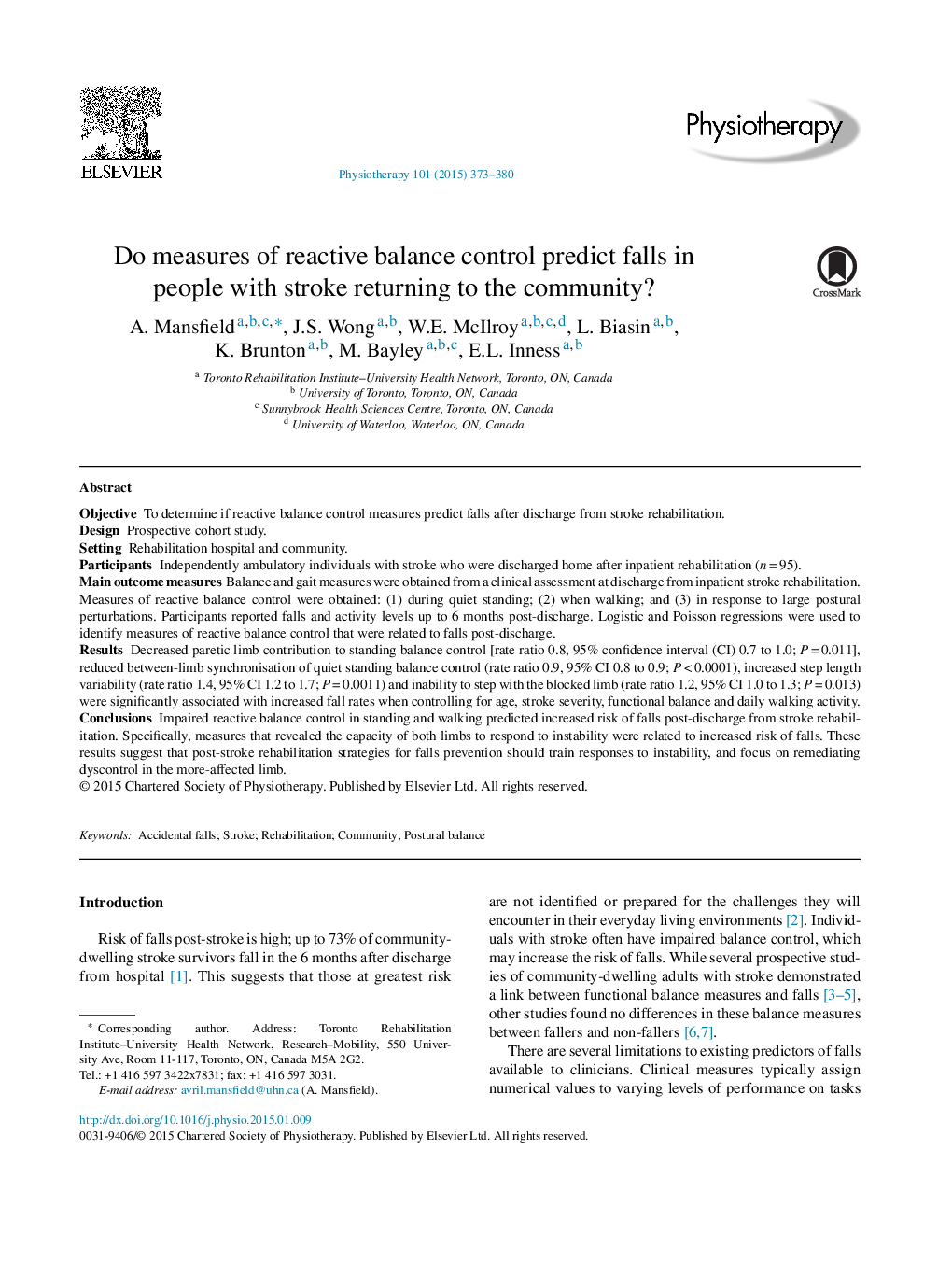| کد مقاله | کد نشریه | سال انتشار | مقاله انگلیسی | نسخه تمام متن |
|---|---|---|---|---|
| 2627673 | 1136091 | 2015 | 8 صفحه PDF | دانلود رایگان |
ObjectiveTo determine if reactive balance control measures predict falls after discharge from stroke rehabilitation.DesignProspective cohort study.SettingRehabilitation hospital and community.ParticipantsIndependently ambulatory individuals with stroke who were discharged home after inpatient rehabilitation (n = 95).Main outcome measuresBalance and gait measures were obtained from a clinical assessment at discharge from inpatient stroke rehabilitation. Measures of reactive balance control were obtained: (1) during quiet standing; (2) when walking; and (3) in response to large postural perturbations. Participants reported falls and activity levels up to 6 months post-discharge. Logistic and Poisson regressions were used to identify measures of reactive balance control that were related to falls post-discharge.ResultsDecreased paretic limb contribution to standing balance control [rate ratio 0.8, 95% confidence interval (CI) 0.7 to 1.0; P = 0.011], reduced between-limb synchronisation of quiet standing balance control (rate ratio 0.9, 95% CI 0.8 to 0.9; P < 0.0001), increased step length variability (rate ratio 1.4, 95% CI 1.2 to 1.7; P = 0.0011) and inability to step with the blocked limb (rate ratio 1.2, 95% CI 1.0 to 1.3; P = 0.013) were significantly associated with increased fall rates when controlling for age, stroke severity, functional balance and daily walking activity.ConclusionsImpaired reactive balance control in standing and walking predicted increased risk of falls post-discharge from stroke rehabilitation. Specifically, measures that revealed the capacity of both limbs to respond to instability were related to increased risk of falls. These results suggest that post-stroke rehabilitation strategies for falls prevention should train responses to instability, and focus on remediating dyscontrol in the more-affected limb.
Journal: Physiotherapy - Volume 101, Issue 4, December 2015, Pages 373–380
